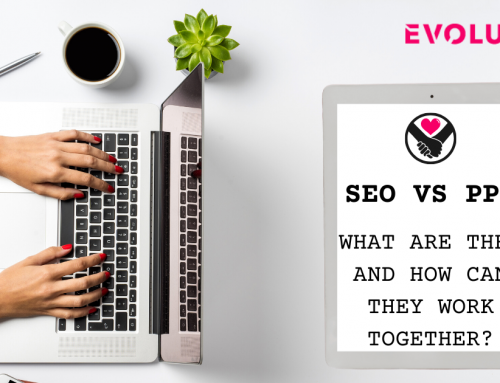Have you ever found yourself spending considerable time producing a high-quality piece of content, only for it not to perform as you expected?
Despite being well written, doing the necessary research, including all the right keywords and covering all the relevant points, not every blog you post will rank well. Some perform well in the beginning but decline as time goes on. It can be frustrating putting in all that time and effort only to find the post didn’t perform as hoped. But, there may be a solution by republishing your old underperforming blog. In this article, we’ll discuss some tips on how to update and repost your old blogs for higher rankings!
- Why should you update old blog posts?
- When to update old blog posts
- How do you update old blog posts?
- SEO for updating blogs
Why should you update old blog posts?
With the rush to continuously pump out new content, many people neglect the work they published in the past. In doing so, the content may not be reaching its full potential. Blogs specifically, which we will be concentrating on in this piece, would highly benefit if they meet specific requirements, such as being published at least a year ago and are currently underperforming. Not only can it be beneficial in terms of SEO and traffic, but it will also likely be quicker to do than producing a brand new piece of content. You may not need to rewrite the entire blog, but simply updating some statistics or images can help keep your content fresh, accurate and relevant – which are important ranking factors for search engines.
It is important to keep in mind that this tactic may not be suitable for every blog post. A key part of effectively republishing blogs is an appropriate analysis of your content to find which would be due for an update. You shouldn’t use this tactic on a large number of blogs at once as it will dilute its effectiveness.
When should you update existing blog posts?
Often older blogs are some of the most popular on sites. The reason being they have built up links over time. Updating older blogs is also an opportunity to internally link to newer pages on your website, which gives the newer posts a ranking boost.
Choosing when to update your old blog posts, you must first identify which blogs are best to focus on. Start by identifying your top-performing blogs. You must then consider the relevancy of this post. Is it a seasonal blog catered to a specific time of the year? If so, you should wait until this time of the year to capitalise on the increased search volume around your target keywords. This will help you to maximise the value and positive SEO benefits of updating the post.
Is the topic of your blog post starting to trend? Then it may be a good time to update the article to benefit from this. By taking advantage of current trends, you can ensure that your blog remains relevant and engaging.
How do you repurpose existing blog content?
It is very important when you are updating these posts that you ensure you use the same URL. This will help to preserve all the page authority and backlinks that this post has built up over time rather than having to start afresh. This will be key for allowing your updated post to gain traction. You can do this by writing your updated blog and pasting this updated content into the HTML of your desired post, replacing the old content.
Here are some important factors to consider when updating existing blogs:
- It’s important to keep the title as close to the original as possible. If you do need to change the title, don’t use it to target a new keyword.
- Ensure you keep the target keywords the same. There’s a reason this post was performing well, and the authority it would have accrued applied to the topics and keywords for this blog. You want to continue ranking for these keywords to restore the strong performance of the blog.
- Update outdated content. Updating older blogs which have outdated content is one of the most important parts of republishing blogs. Relevancy and accuracy are important for your blog to perform well. Change any points of information that are no longer relevant, ensure all examples are up to date and apply to the current landscape, update any copy that is out of date and add new internal links to more relevant and effective pages that have since been posted on the site.
- Search engines use both internal and external links to understand what the site is about so these need to be checked and possibly updated.
- While not essential, you can add an editor’s note at the bottom of the blog mentioning the blog was originally posted at an earlier time. If the blog has already accumulated a number of comments this gives greater transparency to the reader as to why the dates do not align.
- This is a strategy we’ve used ourselves with clients. We would assess their older blogs to see which had the most significant potential for growth. This strategy is most effective on blogs which are underperforming. In fact, if they are already ranking very well for a target keyword, republishing could potentially do more harm than good in certain circumstances. Also if your post is low in the rankings, such as below the 20th position for a target keyword it’s less likely republishing will lead to your blog post ranking near the top.
SEO for updating blogs
When optimising updated blogs, it is important to make sure that any old blogs are updated according to the SEO best practices of today. Older blogs may be more likely to contain keyword stuffing, paid links and other such black hat SEO practices that will incur penalties today. It is important to ensure that any of these occurrences are removed. Similar to the blog content itself, it is also important to make sure that your blog’s meta description is up to date and relevant to the updated post. Change any information that is dated and make sure that the call to action is relevant to the post.
Outside of updating blog content, doing a backlink analysis of the pages that rank higher than your blog can be beneficial. If you see blogs with a lower page authority ranking higher than your post, this could indicate there is an issue with the content. But if all those ranking higher have a better page authority, the issue is likely related to the link authority rather than the content.
Updating your old blog posts can at times be just as effective as posting new content. By keeping your blog content up-to-date, you can ensure that your audience is getting the most accurate and relevant information. Additionally, updating older blog posts can improve your blog’s SEO ranking. This is because search engines favour websites that regularly update their content. As a result, updating your blog on a regular basis can help you attract more readers and improve your overall online visibility.
Looking to increase your visibility online? Fill out our contact form and get in touch with the team today! We offer a free digital marketing consultation, as well as a free website assessment. Start your journey with Evolution Digital today.




